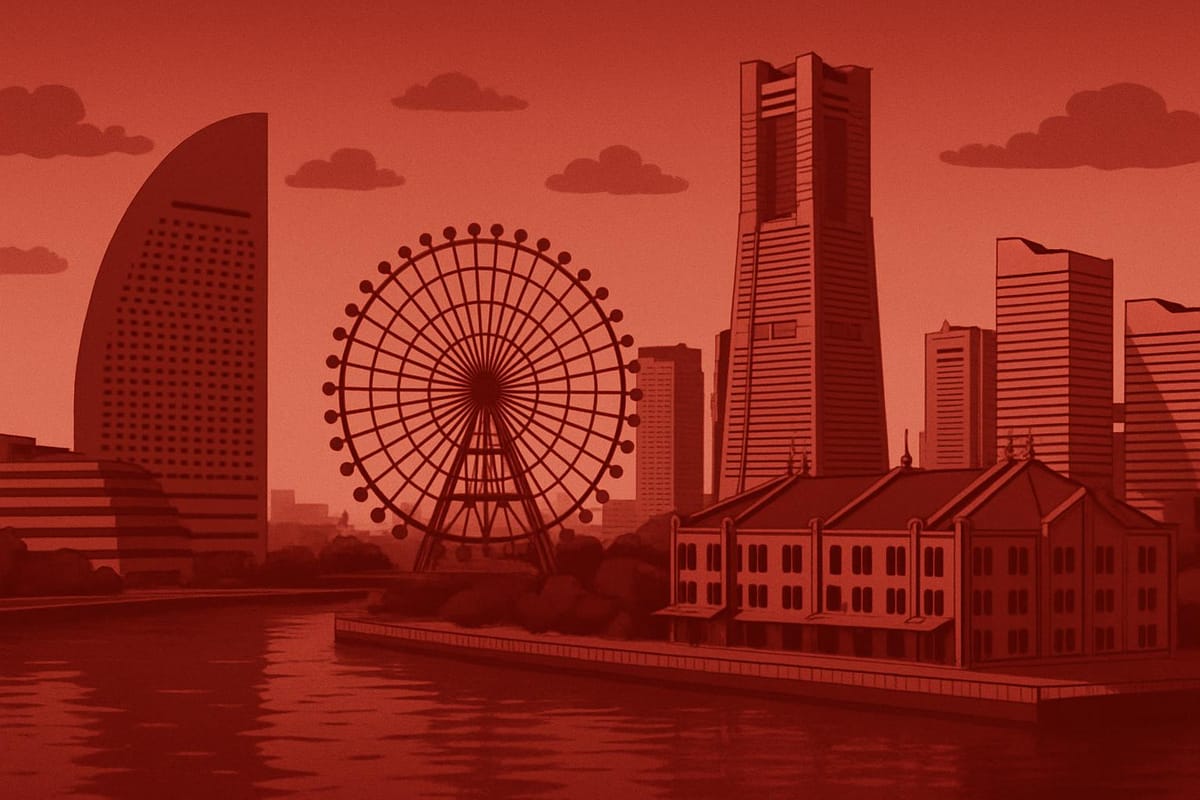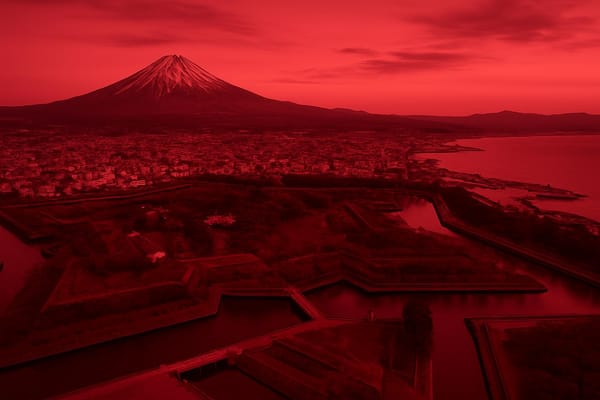Yokohama
Top bay attractions: Minato Mirai skyline, Chinatown, Red Brick Warehouse, parks & nightlife

Important things to know about Yokohama
Yokohama, Japan presents itself as a vibrant and modern port metropolis where history and innovation coexist, offering a unique urban fabric shaped by international trade, cultural exchange, and continuous redevelopment; as the second largest city in Japan and the heart of Kanagawa Prefecture, Yokohama balances a bustling economy anchored in shipping, logistics, advanced manufacturing and technology with flourishing creative industries, higher education institutions and research centers that foster startups and cross-border collaboration. Residents and visitors experience a cityscape defined by a mix of contemporary architecture and preserved neighborhoods, diverse culinary scenes influenced by global connections, and community life that ranges from lively commercial districts to quieter residential wards where parks, waterfronts and local markets contribute to quality of life. Efficient transportation networks link Yokohama seamlessly to Tokyo and the wider Greater Tokyo Area, supporting daily commutes, business activity and regional mobility while encouraging sustainable urban planning initiatives and cycling-friendly streets. The population’s multicultural character, shaped by over a century of international contact, is reflected in festivals, arts programming and everyday cultural exchange, making the city both outward-looking and deeply rooted in Japanese urban traditions. With a temperate climate that brings humid summers and cool winters, Yokohama continues to evolve as a center for maritime commerce, cultural dynamism and urban innovation, positioning itself as a resilient, forward-thinking city that blends economic vitality with approachable neighborhood living and cosmopolitan appeal.
Sightseeing hot-spots in Yokohama
Yokohama is a vibrant port city where modern skyline meets historic charm, and the best places to visit in Yokohama center around the iconic Minato Mirai waterfront. Strolling along the bay, visitors are drawn to the towering Landmark Tower, which offers sweeping panoramic views from its observation deck, and the colorful Cosmo Clock 21 Ferris wheel that lights up the harbor at night. A bay cruise provides a unique perspective of the city’s skyline, making it one of the most memorable Yokohama sightseeing experiences for photographers and families alike.
For food lovers and culture seekers, Yokohama Chinatown is a must-see, featuring narrow streets filled with restaurants, street food stalls, and ornate gates that celebrate the city’s international heritage. Nearby, the historic Red Brick Warehouse hosts seasonal markets, live events, and boutique shops in a beautifully restored riverside complex, while the interactive Cup Noodles Museum offers a fun, hands-on look at culinary innovation. Quiet moments can be found at Yamashita Park, where locals and tourists relax beside the water, making these attractions top choices when compiling things to do in Yokohama.
Beyond the central waterfront, peaceful escapes and local neighborhoods reveal more of Yokohama’s character: the traditional landscape of Sankeien Garden with its historic buildings, the architecturally striking Osanbashi Pier for arriving ships and sunset views, and the lively entertainment district of Noge where izakayas and live music create an authentic evening atmosphere. Whether planning a weekend itinerary or a full sightseeing itinerary, Yokohama blends urban energy and seaside calm, ensuring that every visit hits the highlights and uncovers new favorites among the best places to visit in Yokohama.
Hotels to enjoy in Yokohama
Yokohama offers a diverse selection of hotels that suit every traveler, from sleek business travel accommodations near Yokohama Station to luxury bayfront stays in Minato Mirai with spectacular bay view rooms overlooking the harbor. Whether you're exploring Yokohama Chinatown, strolling through Yamashita Park, or catching a concert at Landmark Tower, hotels in Yokohama place you within easy reach of major attractions and excellent dining. Many Yokohama hotels combine modern comforts with local character, offering guests fast free Wi‑Fi, stylish lounges, and on-site restaurants serving fresh seafood and fusion cuisine. The city's hotel scene responds well to both short city breaks and extended stays, with options that emphasize convenience, safety, and proximity to public transit.
When choosing among Yokohama hotels, consider your priorities: luxury properties often include spas, rooftop terraces, and concierge services, while budget and family-friendly hotels focus on practical amenities like laundry, extra beds, and helpful multilingual staff. Boutique hotels in Motomachi and Kannai provide unique design and neighborhood charm, while larger international chains are ideal for conferences and group bookings thanks to spacious meeting rooms and business centers. For a memorable stay, look for rooms with harbor views, breakfast buffets showcasing local flavors, or hotels offering access to a day onsen experience nearby. Whether traveling for work or leisure, hotels in Yokohama, Japan deliver a comfortable base for discovering one of Japan’s most dynamic port cities.
Restaurants to try in Yokohama
Yokohama restaurants offer a rich tapestry of flavors that reflect both traditional Japanese cuisine and vibrant international influences, making the city a must-visit destination for food lovers. From the bustling lanes of Chinatown where dim sum and Chinese barbecue sizzle on the street to elegant sushi counters near the harbor, the variety of dining experiences in Yokohama is extraordinary. Seafood lovers can savor freshly landed catches at conveyor-belt sushi bars or sit down to omakase meals guided by skilled chefs, while ramen aficionados hunt down signature local bowls in cozy alleys. The culinary scene also includes refined kaiseki, lively local izakayas, and modern fusion kitchens in the Minato Mirai district, ensuring that every visit showcases a different facet of the city’s food culture.
Exploring the best restaurants in Yokohama means sampling both hidden neighborhood gems and acclaimed establishments, including Michelin-starred options and family-run eateries that have perfected recipes over generations. Vegetarians and adventurous eaters alike will find creative choices, from vegetable-forward tasting menus to street snacks bursting with umami. With a strong emphasis on seasonal ingredients and meticulous presentation, Yokohama’s dining landscape is ideal for travelers seeking memorable meals and photo-worthy plates. Whether planning a culinary tour or a casual night out, Yokohama delivers an exciting mix of authenticity, innovation, and coastal charm that keeps food lovers returning again and again.
Best shopping stops in Yokohama
Yokohama offers a vibrant and varied shopping experience that blends modern malls with historic streets, making shopping in Yokohama a must for visitors to Yokohama, Japan. Stroll through Yokohama Chinatown for colorful street food, unique ingredients and souvenir stalls, then head to the futuristic Minato Mirai area where large complexes like Queen’s Square and MARK IS Minatomirai showcase international brands, Japanese fashion labels and lifestyle shops. For a more boutique atmosphere, Motomachi is famous for its elegant boutiques, leather goods and imported fashions, while the atmospheric Red Brick Warehouse hosts design stores and seasonal markets ideal for finding artisan products and limited-edition items. Between department stores near the station and the waterfront shopping promenades, the variety of options ensures shoppers looking for electronics, cosmetics, kawaii goods or homewares can easily find what they want.
To make the most of the best shopping in Yokohama, plan your route around neighborhoods so you can combine sightseeing with retail therapy, and keep an eye out for tax-free shopping at participating stores if you’re a short-term visitor. Local favorites to buy include specialty snacks, handcrafted ceramics, stylish Japanese clothing and novelty souvenirs that reflect Yokohama’s rich port history and multicultural influences. Traveling by train connects all the key districts quickly, so whether you’re seeking high-end fashion, quirky gifts or delicious eats, shopping in Yokohama delivers variety, convenience and memorable finds that capture the spirit of coastal Japan.
Nightlife highlights in Yokohama
Yokohama nightlife comes alive as the sun dips below the bay, with Minato Mirai's skyline and the glowing Cosmo Clock 21 Ferris wheel setting a cinematic scene for evening strolls along the harbor. The night views from the waterfront promenades and observatories offer iconic photo opportunities, while the Red Brick Warehouse area hosts seasonal events, outdoor bars and cozy terraces that stay lively well into the night. For food lovers, Yokohama Chinatown transforms after dark into a tasty maze of neon-lit alleys where late-night ramen, dim sum and street snacks fuel the crowds, making the district a cornerstone of memorable Yokohama nightlife experiences.
For those seeking local flavor, neighborhoods like Noge pride themselves on intimate izakayas, smoky jazz bars and bustling live music venues that spotlight both established bands and emerging artists, embodying the city’s energetic music scene. Modern cocktail bars, craft breweries and classic karaoke rooms offer diverse ways to spend an evening, while scenic night cruises on Yokohama Bay provide a romantic vantage point of the illuminated city. Whether you’re hunting for trendy Yokohama bars, authentic late-night eats or vibrant music spots, Yokohama nightlife blends safe, easy-to-access entertainment with unforgettable seaside ambiance.
Getting around in Yokohama
Yokohama offers excellent airport access and dense train connections that make it a convenient base for travelers exploring the Tokyo area and beyond: the city is well linked to Haneda Airport by direct Keikyu services and frequent airport buses, typically taking about 20–30 minutes from central Yokohama Station, while Narita is reachable in roughly 90–120 minutes by combining JR or private lines with airport express trains; for nationwide travel, Shin-Yokohama Station sits on the Shinkansen network providing fast links to Tokyo (around 20 minutes) and western Japan (a few hours), and the city’s main hub, Yokohama Station, is served by multiple JR East lines (Tokaido, Yokosuka, Keihin-Tohoku and others) plus private operators such as Keikyu, Tokyu and Sotetsu, offering seamless transfers to subway and local lines; regular services, clear signage, widespread IC card acceptance (Suica/PASMO) and dedicated airport buses ensure that public transport in Yokohama is efficient for business and leisure travelers, with convenient luggage-friendly options and frequent departures that support flexible itineraries.
Culture must-see's in Yokohama
Yokohama, Japan blends historic charm and modern dynamism into a cultural scene that attracts visitors from around the world. Strolling through Yokohama Chinatown, the largest in Japan, you encounter vibrant street food, ornate temples and a fusion of Chinese and Japanese traditions that define much of the city's culinary culture. The waterfront district of Minato Mirai showcases futuristic architecture, shopping and entertainment, while quieter pockets like Motomachi offer boutique stores and a refined café culture. Museums such as the Yokohama Museum of Art and interactive attractions like the CupNoodles Museum and Ramen Museum present both international and uniquely Japanese perspectives, making Yokohama attractions appealing to families, art lovers and culinary tourists alike. Emphasizing accessibility, the city's efficient transport network makes it easy to weave cultural stops into any itinerary across Yokohama, Japan.
Beyond landmarks, the living culture of Yokohama is embodied in seasonal festivals, music scenes and preserved historical neighborhoods. The traditional landscape of Sankeien Garden offers a peaceful contrast to the neon-lit harbor, with restored teahouses and seasonal blooms that reflect Japan’s reverence for nature. Nightlife in areas like Noge pulses with jazz clubs, izakayas and street-level creativity, while annual events-illumination festivals, cherry blossom celebrations and maritime parades-bring both residents and visitors together. Local craftspeople and food artisans sustain a sense of place, and contemporary galleries, live houses and public art installations keep the cultural conversation evolving. For anyone researching Yokohama culture or planning a trip to Yokohama, Japan, the city’s seamless mix of tradition and innovation makes it a rewarding destination for exploration and discovery.
History of Yokohama
Yokohama's history is a striking example of rapid transformation from a quiet fishing settlement into one of Japan's most important port cities. Before the mid-19th century the area around present-day Yokohama was part of the greater Kanagawa region, with small harbors and rice paddies defining local life. The arrival of Western powers in the 1850s - following treaties such as the Treaty of Kanagawa and the Harris Treaty - forced Japan to open certain ports to foreign trade, and in 1859 Yokohama was designated as the primary foreign settlement. This deliberate choice catalyzed wholesale change: foreign merchants and diplomats established consulates, trading houses, shipyards, and warehouses, while Japanese entrepreneurs began to reorganize production for export, particularly silk and cotton. The city's early role in the Meiji Restoration era modernization made it a center for new technologies and railways, connecting Yokohama to Tokyo and fostering industrial growth. Architecturally the foreign settlement left a legacy of Western-style buildings and churches that contrasted with traditional Japanese structures, creating a cosmopolitan urban fabric that attracted visitors, traders, and settlers from around the world.
The 20th century tested Yokohama's resilience through both disaster and recovery, shaping its modern identity as a dynamic international hub. The Great Kantō Earthquake of 1923 devastated much of the city, and the damage was compounded by wartime destruction during World War II; however, each reconstruction phase spurred urban innovation and economic revival. Postwar redevelopment and the later creation of the Minato Mirai waterfront district reimagined former industrial and port areas as mixed-use spaces featuring offices, museums, parks, and the iconic Landmark Tower. Today Yokohama is celebrated for its vibrant Chinatown, maritime museums, and ongoing urban renewal projects that balance heritage preservation with contemporary urban development and tourism. As a center of international commerce and cultural exchange, Yokohama continues to play a pivotal role in Japan's economy while maintaining a lively public life, eclectic architecture, and an enduring story of adaptation - a narrative that makes the city a compelling destination for both historians and travelers interested in the evolution of modern Japan.



